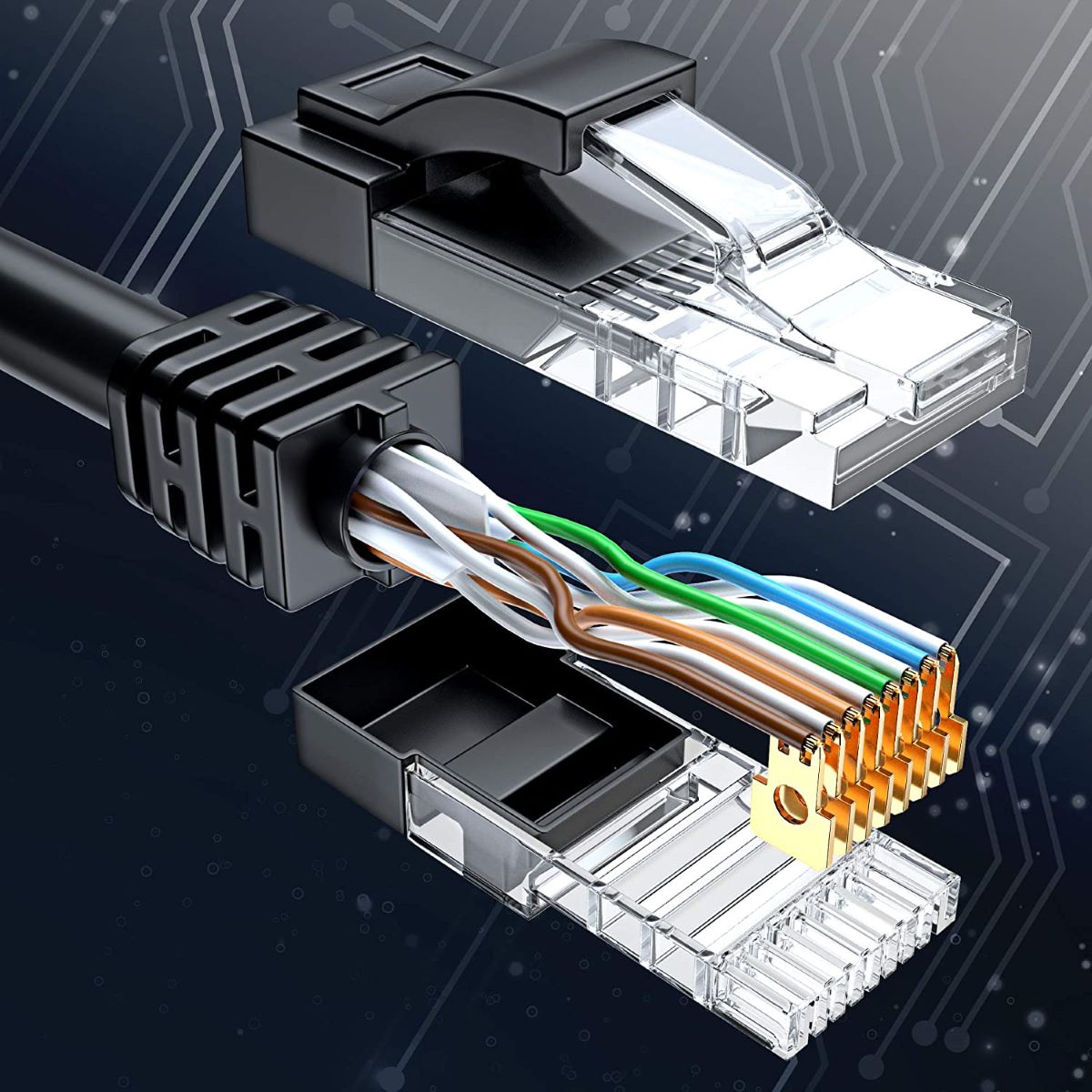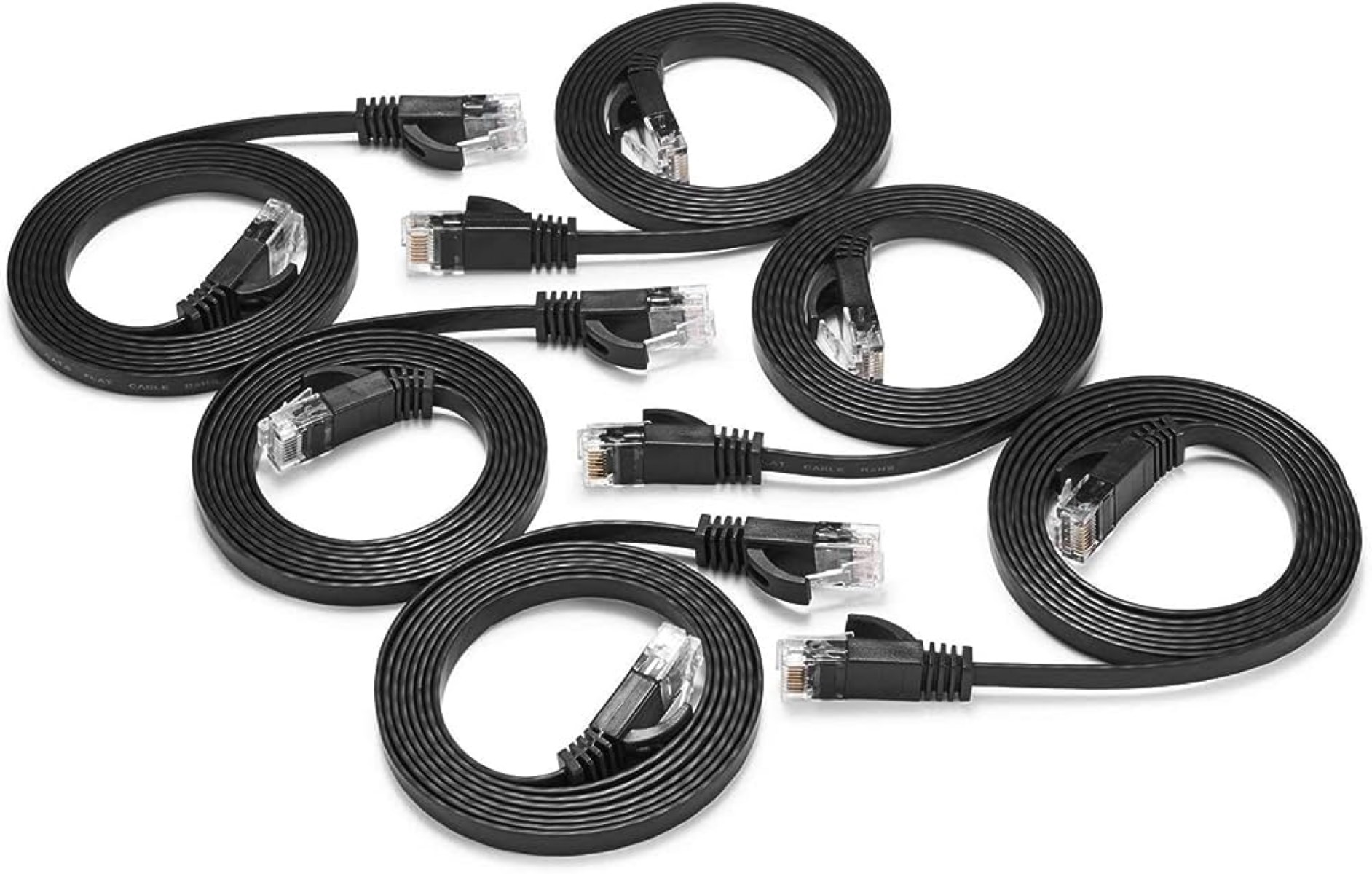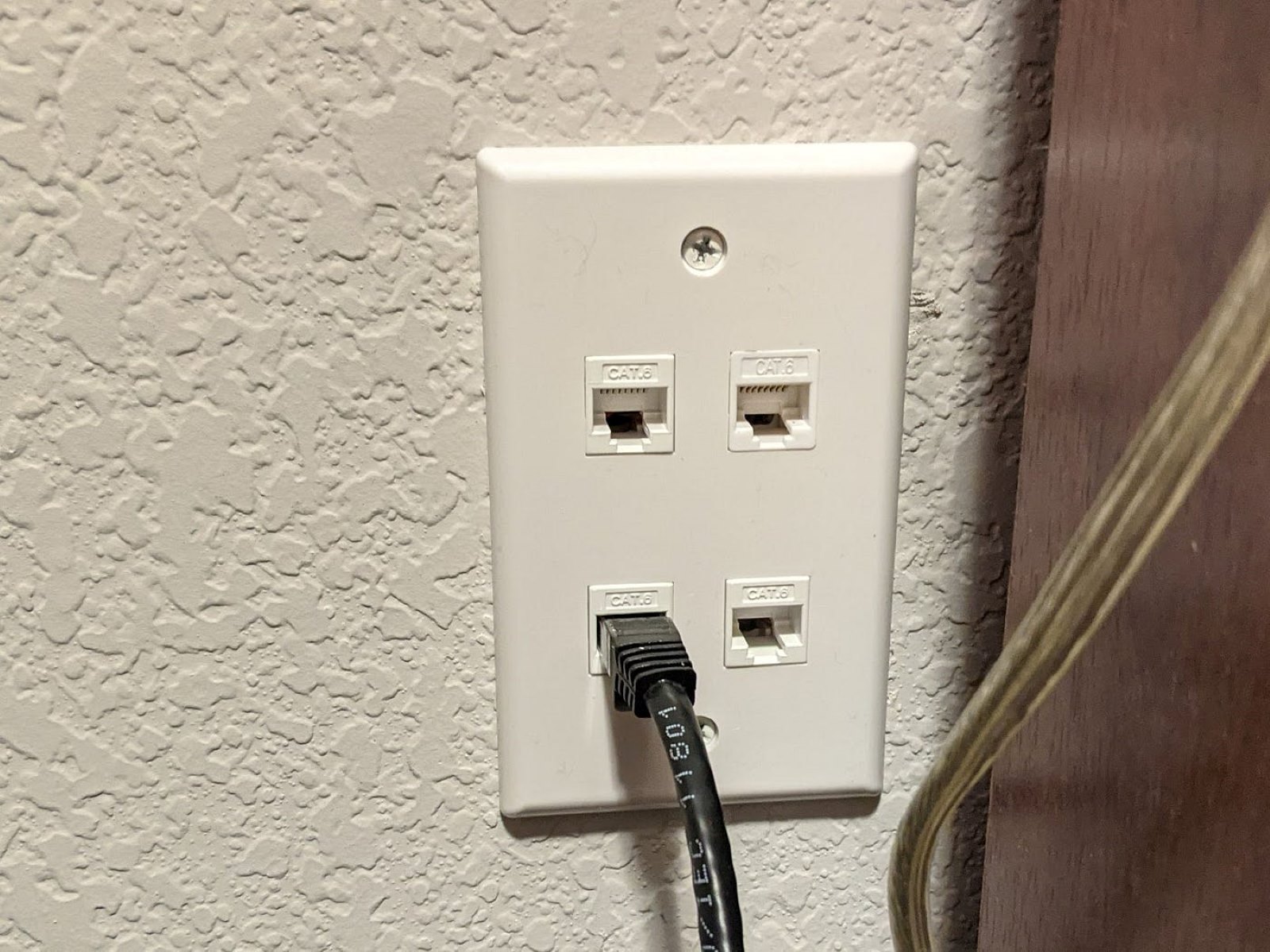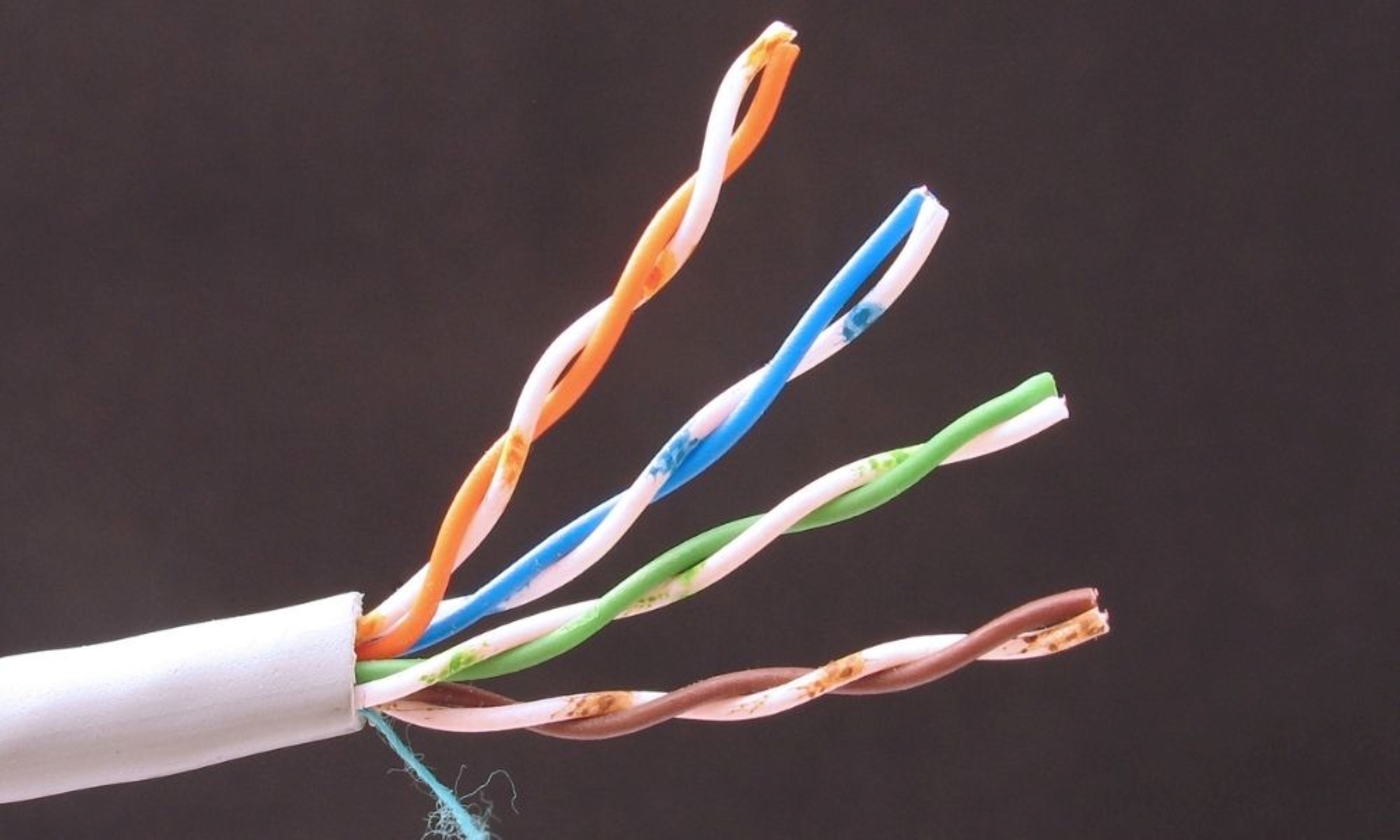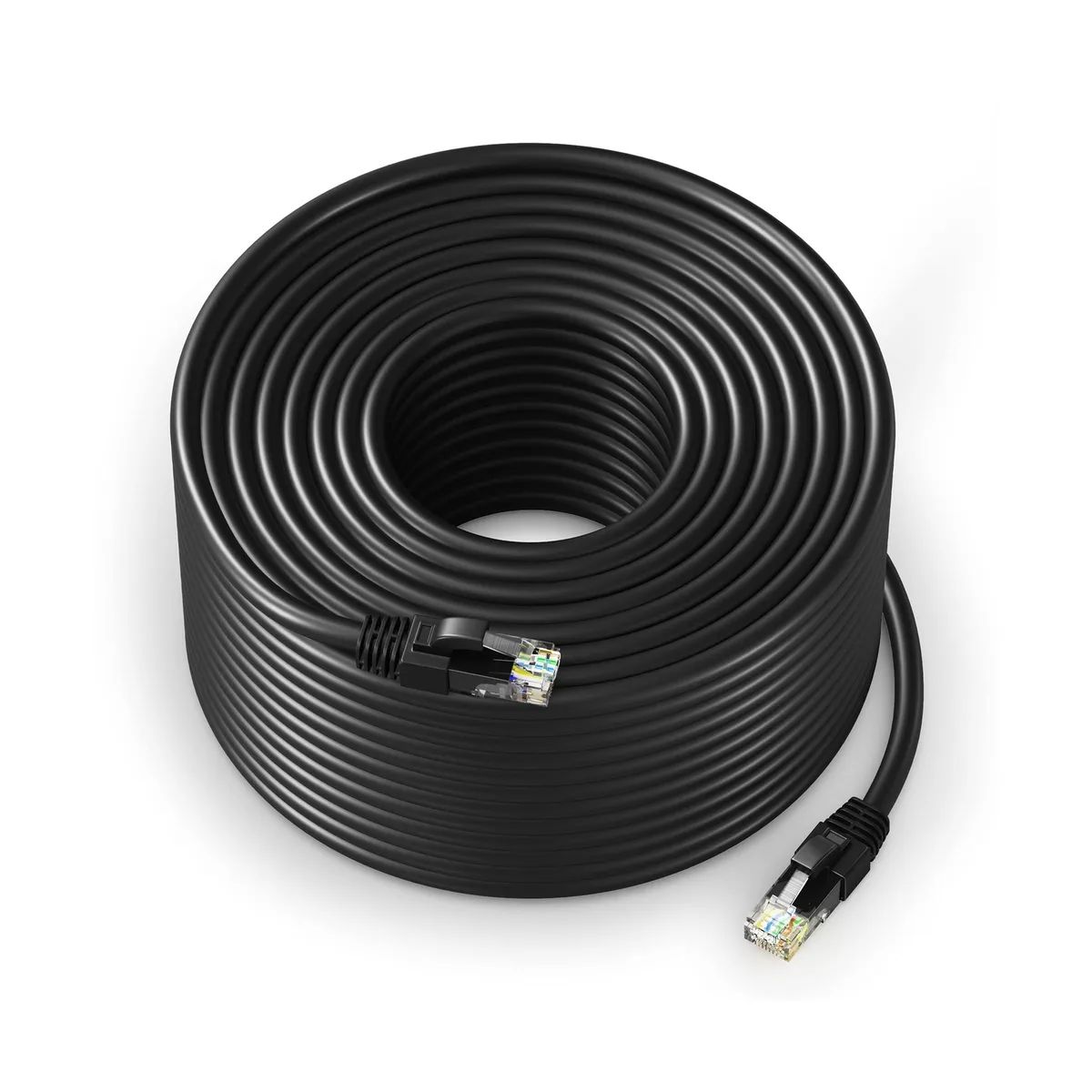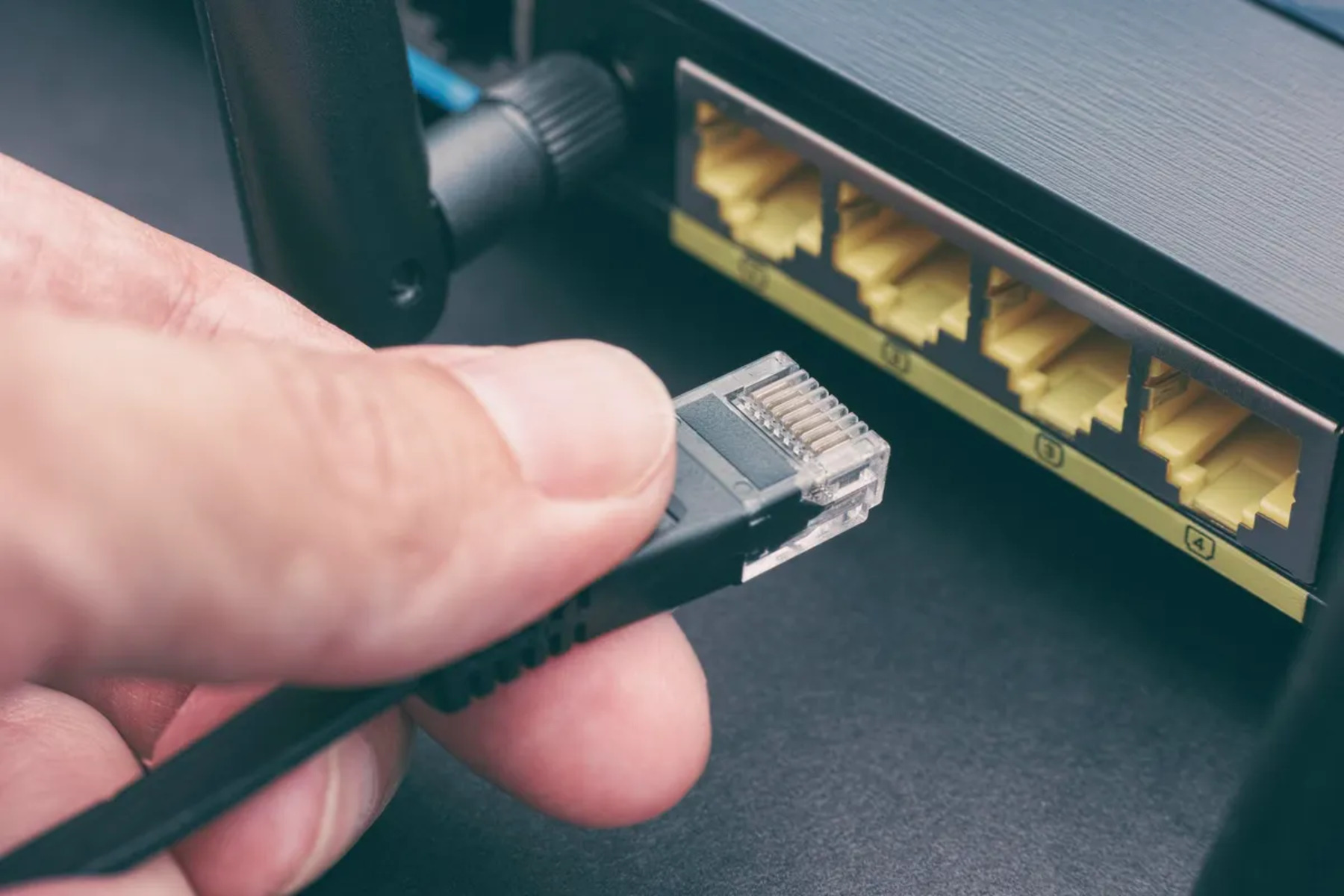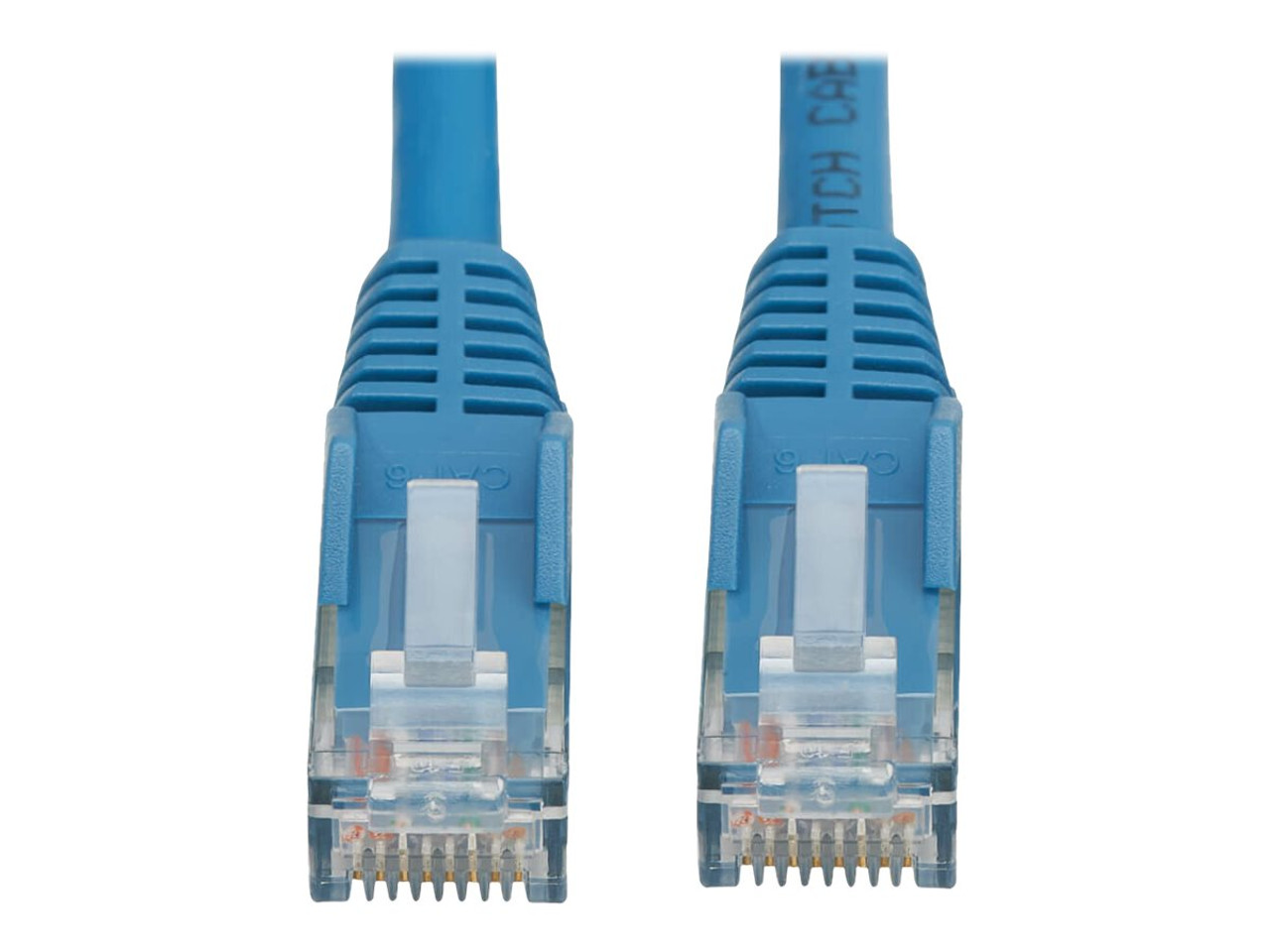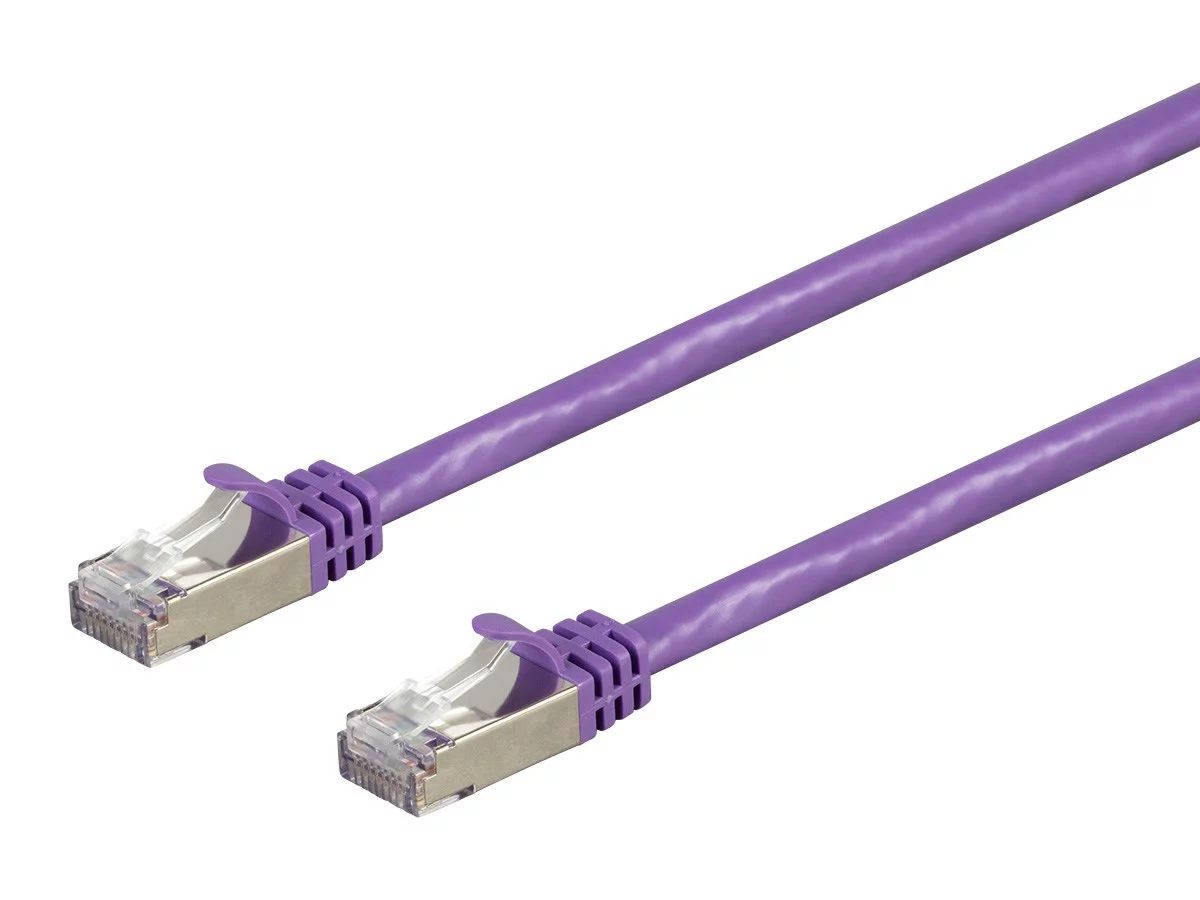Introduction
Welcome to the world of Ethernet cables! If you find yourself wondering how to get an Ethernet cable, you’ve come to the right place. In this article, we will guide you through the basics of Ethernet cables and help you choose the right one for your needs.
Ethernet cables are an essential component of any wired network setup. They provide a reliable and secure connection between devices, ensuring fast and stable data transmission. Whether you’re setting up a home network, upgrading your office infrastructure, or just need an Ethernet cable for a specific device, understanding the different types, categories, and connectors is crucial in making an informed decision.
Choosing the right Ethernet cable involves considering factors such as the required speed, distance, and compatibility with your devices. Additionally, knowing where to shop for Ethernet cables and how to compare brands can help you find the best deals without compromising on quality.
In this article, we will provide a comprehensive guide to help you navigate through the world of Ethernet cables. We will explain the basics, including the various categories of Ethernet cables, the different types of connectors available, and how to calculate the length needed for your specific setup. Furthermore, we will offer tips on buying Ethernet cables on a budget and guidance on maintaining and caring for your cables to ensure their longevity.
So, whether you’re a tech enthusiast looking to set up a gaming rig, a professional aiming to optimize your office network, or just someone who wants to connect devices seamlessly, this article will equip you with the knowledge to get the Ethernet cable that suits your requirements. Let’s dive in and unravel the secrets of Ethernet cables!
Understanding the Basics of Ethernet Cables
Ethernet cables are essential for establishing a wired connection between devices, allowing for the seamless transmission of data. They are commonly used in home networks, office setups, and data centers. To grasp the fundamentals of Ethernet cables, it’s important to familiarize yourself with a few key components and terminologies.
The Ethernet cable consists of several twisted pairs of copper or fiber optic wires enclosed in an outer protective sheath. This design helps minimize interference and signal degradation, ensuring reliable and fast data transfer.
One of the key elements of Ethernet cables is the category, denoted by the letter “Cat” followed by a number (e.g., Cat5e or Cat6). The category determines the cable’s capability in terms of speed and performance. Higher category cables generally offer better performance and can handle faster data transfer rates.
Another important aspect is the connector type used with Ethernet cables. The most common connector is the RJ-45, which resembles a larger telephone connector. It is used with Ethernet cables that have stranded or solid copper wires and is compatible with most devices and network interfaces.
The speed of Ethernet cables is measured in megabits per second (Mbps) or gigabits per second (Gbps). The speed rating indicates the maximum data transfer rate the cable can handle. Higher speed ratings are desirable for activities that require fast and reliable connections, such as streaming HD videos or online gaming.
Understanding the limitations of Ethernet cables is crucial for optimizing your network setup. While twisted-pair Ethernet cables have a maximum effective range of approximately 100 meters, fiber optic cables can transmit data over much longer distances without signal degradation.
To summarize, Ethernet cables are the backbone of wired networks and play a vital role in ensuring smooth and reliable data transmission. By considering factors such as category, connector type, speed, and effective range, you can make informed decisions when selecting the right Ethernet cable for your specific needs. In the next section, we will delve deeper into determining your Ethernet cable requirements, so stay tuned!
Determining Your Ethernet Cable Needs
Before purchasing an Ethernet cable, it’s crucial to assess your specific needs to ensure you select the right cable that meets your requirements. Consider the following factors to determine your Ethernet cable needs:
- Speed Requirements: Determine the maximum speed supported by your devices and network infrastructure. If you have gigabit-compatible devices and a high-speed internet connection, consider opting for Cat6 or higher category cables to fully utilize the available bandwidth.
- Distance: Measure the distance between the devices you want to connect. Ethernet cables have a limited effective range for optimal performance. If the distance exceeds 100 meters (~328 feet), you may have to use additional networking equipment, such as switches or repeaters, or opt for fiber optic cables for longer distances.
- Environment: Assess the environment in which you’ll be using the Ethernet cable. If you need a cable for outdoor or industrial use, select cables with enhanced durability, such as those designed with weather-resistant materials or armored jackets to withstand harsh conditions.
- Compatibility: Ensure that the Ethernet cable you choose is compatible with your devices’ Ethernet ports. Most devices use the RJ-45 connector, but some specialized equipment might require different connector types, such as SFP+ or QSFP+.
- Future Proofing: Consider your future needs when selecting an Ethernet cable. If you anticipate upgrading your network infrastructure or devices in the near future, it’s wise to choose a higher category cable to accommodate potential enhancements and prevent the need for immediate replacements.
By assessing these factors, you can accurately determine your Ethernet cable needs and choose the most suitable option. Remember that investing in a high-quality and appropriate cable ensures a stable and reliable network connection.
In the next section, we will explore the different categories of Ethernet cables available in the market, along with their features and benefits. This will further assist you in making an informed decision when selecting the right cable for your specific needs.
Choosing the Right Category of Ethernet Cable
When it comes to Ethernet cables, choosing the right category is crucial. The category of an Ethernet cable determines its speed, performance, and ability to handle data transmission. Let’s explore the different categories of Ethernet cables:
- Cat5e: Cat5e (Category 5e) cables are commonly used for home networks and small office setups. They offer a maximum speed of 1 Gbps and are suitable for most everyday internet applications. Cat5e cables are also affordable and widely available.
- Cat6: Cat6 (Category 6) cables are an improvement over Cat5e and can handle faster data transfer rates. With a maximum speed of up to 10 Gbps, Cat6 cables are suitable for demanding applications such as high-definition video streaming and online gaming. They are also backward compatible with Cat5e devices.
- Cat6a: Cat6a (Category 6a) cables are an enhanced version of Cat6 cables and are designed to support 10 Gbps speeds over longer distances. They feature improved shielding, which reduces crosstalk and ensures better signal quality. Cat6a cables are suitable for professional settings and locations where high-speed data transfer is critical.
- Cat7: Cat7 (Category 7) cables are designed for high-performance networks and can handle up to 10 Gbps speeds over a maximum distance of 100 meters. They feature individual shielding for each twisted pair and overall shielding, providing excellent protection against electromagnetic interference. Cat7 cables are ideal for data centers and environments with high-density networking equipment.
- Cat8: Cat8 (Category 8) cables are the latest addition to the Ethernet cable family. They support data transfer speeds of up to 40 Gbps and are designed for ultra-high-performance networks. Cat8 cables are suitable for data centers, enterprise-level networks, and applications that require massive data transmission with low latency.
When choosing the right category of Ethernet cable, consider your specific needs, budget, and future requirements. If you have gigabit-compatible devices, a Cat6 cable would be a good choice. However, if you anticipate future upgrades or need higher speeds, investing in a Cat6a or Cat7 cable might be more suitable.
Additionally, it is essential to ensure that the Ethernet cable you choose is compatible with your network devices and infrastructure. Consult the manufacturer’s specifications and guidelines to confirm compatibility and performance expectations.
In the next section, we will delve into the different types of connectors used with Ethernet cables. Understanding connector options is crucial when selecting the right Ethernet cable for your network setup.
Understanding the Different Types of Ethernet Cable Connectors
When it comes to Ethernet cables, the type of connector used plays a crucial role in establishing a secure and reliable connection. Different devices and network interfaces may require specific connector types. Let’s explore some of the most common Ethernet cable connectors:
- RJ-45 Connector: The RJ-45 connector is the most widely used connector for Ethernet cables. It closely resembles a larger telephone connector and features eight pins. The RJ-45 connector is compatible with both stranded and solid copper wires, making it suitable for a wide range of devices, including computers, routers, switches, and network interfaces.
- SFP/SFP+ Connector: The Small Form-Factor Pluggable (SFP) and Enhanced Small Form-Factor Pluggable (SFP+) connectors are commonly used in fiber optic Ethernet cables. These connectors have smaller form factors and are used for connecting devices such as switches, routers, and network cards. SFP/SFP+ connectors are hot-swappable, allowing for easy installation and replacement.
- QSFP/QSFP+ Connector: The Quad Small Form-Factor Pluggable (QSFP) and Quad Small Form-Factor Pluggable Plus (QSFP+) connectors are used for high-speed data transmission in data centers and high-performance computing environments. These connectors support speeds up to 40 Gbps or even 100 Gbps, making them suitable for large-scale networks.
- LC Connector: The LC connector is a small form-factor connector commonly used in fiber optic Ethernet cables. It features a snap-in design and has a secure locking mechanism. LC connectors are popular in data centers and telecommunications networks, providing reliable and high-speed connections.
It is important to ensure that the connector type of your Ethernet cable is compatible with the devices you are connecting. Most consumer-grade devices use the RJ-45 connector, while specialized equipment or high-speed networks may require different connector types, such as SFP, QSFP, or LC.
When selecting an Ethernet cable, be sure to check the connector compatibility and match it with the connector types required by your devices. This ensures a proper and secure connection, minimizing the risk of connection issues or data loss.
In the next section, we will discuss how to calculate the length of Ethernet cable required for your specific network setup. This will help you avoid unnecessary cable wastage and ensure optimal cable management.
Calculating the Length of Ethernet Cable Required
When planning your network setup, it’s important to calculate the length of Ethernet cable needed to ensure a clean and efficient installation. Proper cable management not only ensures a tidy appearance but also helps maintain optimal signal quality. Here’s how to calculate the length of Ethernet cable required:
- Measure the Distance: Determine the physical distance between the devices you intend to connect with the Ethernet cable. Measure the path the cable will take, accounting for any corners or obstacles that may affect the cable’s routing.
- Add Extra Length: To accommodate any variations or unforeseen circumstances during installation, it’s recommended to add an extra length of cable. This additional slack will prevent the cable from being stretched or strained and allow for flexibility if you need to reposition devices or make adjustments in the future.
- Consider Riser or Plenum Spaces: If you are planning to run the Ethernet cable through riser or plenum spaces, such as walls or ceilings, ensure that you account for the additional distance. These spaces may require specialist cables that are certified for fire safety and specific building codes.
- Avoid Excessive Cable Lengths: While it’s important to have enough cable to reach between devices comfortably, excessively long cables can lead to signal degradation and performance issues. Longer cable lengths introduce more resistance and attenuation, which can result in slower data transfer speeds or data loss. Therefore, it’s best to keep cable lengths within reasonable limits as recommended by industry standards.
It’s worth noting that Ethernet cables are typically sold in standardized lengths, such as 1 meter, 2 meters, 5 meters, and so on. If your calculated cable length falls between standard lengths, it’s advisable to round up to the nearest available length to ensure you have enough cable without unnecessary wastage.
By accurately calculating the length of Ethernet cable required, you can eliminate the risk of running out of cable during installation or purchasing excessive amounts. This ensures a clean and efficient network setup while maintaining optimal signal performance.
In the next section, we will discuss the pros and cons of shopping for Ethernet cables online versus in-store. This will help you decide which method suits your preferences and requirements.
Shopping for Ethernet Cables: Online vs. In-store
When it comes to purchasing Ethernet cables, you have the option to shop either online or in-store. Each method has its advantages and considerations. Let’s explore the pros and cons of shopping for Ethernet cables online versus in-store:
Online Shopping:
- Wide Selection: Online retailers offer a vast selection of Ethernet cables, allowing you to easily compare different brands, categories, lengths, and prices. You can find specialized cables, such as outdoor-rated or plenum-rated varieties, that may not be readily available in physical stores.
- Convenience: Shopping online provides ultimate convenience. You can browse and purchase Ethernet cables from the comfort of your own home, without the need to travel to a physical store.
- Price Comparison: Online platforms allow you to compare prices from multiple sellers, ensuring that you get the best deal. You can also take advantage of discounts, promotions, and customer reviews to make an informed purchasing decision.
- Delivery: With online shopping, your Ethernet cables will be delivered right to your doorstep. This saves you time and effort, especially if you live far from physical stores or if you have a busy schedule.
- Limited Personal Interaction: Online shopping lacks the personal interaction and immediate assistance you may find in physical stores. However, most online retailers have responsive customer support to help address any issues or queries you may have.
In-Store Shopping:
- Immediate Gratification: Shopping in-store allows you to physically see and touch the Ethernet cables before making a purchase. You can quickly obtain the cables you need and have them in hand, reducing wait times.
- Expert Assistance: Physical stores often have knowledgeable staff who can provide advice and guidance based on your specific requirements. They can help you find the right category, length, and connector type, ensuring a suitable cable for your needs.
- Opportunity for Returns and Exchanges: With in-store purchases, if you need to return or exchange an Ethernet cable, you can easily do so by visiting the store. This can be more convenient than coordinating returns or exchanges through online platforms.
- Limited Selection: Physical stores may have a more limited selection compared to online retailers. Specialty or specific cables may be harder to find, especially if they are not commonly stocked.
- Potential Higher Prices: In-store prices may be slightly higher compared to online prices due to overhead costs. However, this can vary depending on the store and the region.
Consider your personal preferences, urgency, and the availability of Ethernet cables in your local area when deciding between online and in-store shopping. Both methods have their merits, and you can choose the option that aligns best with your needs and circumstances.
In the next section, we will discuss how to compare different Ethernet cable brands and manufacturers to help you make an informed purchasing decision.
Comparing Different Ethernet Cable Brands and Manufacturers
When shopping for Ethernet cables, it’s important to consider the different brands and manufacturers available. Not all Ethernet cables are created equal, and the quality and performance can vary. Here are some key factors to consider when comparing different Ethernet cable brands:
- Reputation and Reliability: Research and consider the reputation and reliability of the brands you are considering. Look for trusted and well-established manufacturers known for producing high-quality Ethernet cables. Customer reviews and feedback can be helpful in assessing the reputation of a brand.
- Certifications and Standards Compliance: Check if the Ethernet cables meet industry standards and certifications. Look for brands that adhere to established standards such as TIA/EIA or ISO/IEC, as this ensures that the cables have been tested and meet specific performance criteria.
- Quality of Materials: Consider the quality of materials used in the construction of the Ethernet cables. Look for cables that have high-quality copper conductors, sturdy insulation, and durable outer jackets. Cables with good shielding technology are also desirable as they offer better protection against interference.
- Performance Specifications: Compare the specifications of different Ethernet cables, such as the maximum speed, maximum distance, and signal integrity. Higher category cables generally offer better performance and support faster data transfer rates.
- Price and Value: Compare the prices of Ethernet cables from different brands, taking into account the features, performance, and quality. While it’s essential to consider your budget, keep in mind that investing in higher-quality cables may provide better long-term value and performance.
- Warranty and Customer Support: Check the warranty offered by the brand and the level of customer support provided. A reliable brand will typically offer a warranty that demonstrates their confidence in the quality of their products. Prompt and helpful customer support can also be a valuable asset if you have any issues or inquiries.
By considering these factors and comparing different Ethernet cable brands and manufacturers, you can make an informed purchasing decision. It’s important to balance quality, performance, and budget to ensure you are getting a reliable and suitable Ethernet cable for your specific needs.
In the next section, we will provide tips for buying Ethernet cables on a budget. These tips will help you find affordable options without compromising too much on quality.
Tips for Buying Ethernet Cables on a Budget
Buying Ethernet cables on a budget doesn’t mean sacrificing quality. With a little planning and consideration, you can find affordable options that meet your needs. Here are some tips to help you buy Ethernet cables on a budget:
- Determine Your Requirements: Assess your specific requirements and determine the minimum category, length, and speed needed for your network. Avoid overspending on features or specifications that you don’t actually need.
- Consider Lower Category Cables: If you don’t require high-speed data transfer or are setting up a basic home network, consider opting for lower category Ethernet cables, such as Cat5e. These cables are more cost-effective while still providing adequate performance for everyday use.
- Shop Around: Compare prices from different retailers or online platforms before making a purchase. Look for discounts, promotions, or bundle deals that can help you save money. Consider purchasing Ethernet cables in bulk if you have multiple connections to make.
- Consider Second-Hand Options: If budget constraints are tight, consider checking for second-hand or refurbished Ethernet cables. However, be cautious and ensure that the cables are in good condition and meet the necessary specifications.
- Avoid Overly Long Cables: Purchase Ethernet cables of the appropriate length to avoid unnecessary costs. Longer cables are generally more expensive, so accurately measure the distance between your devices and choose cables accordingly.
- Check for Value Packs: Some manufacturers offer value packs or multipacks of Ethernet cables, which can provide better deals compared to buying individual cables. These packs often include cables of varying lengths, allowing you to have a selection for future needs.
- Consider Generic Brands: Generic or lesser-known brands can sometimes offer quality Ethernet cables at a more affordable price compared to well-known brands. Do some research, read reviews, and check for certifications to ensure the cables meet your requirements.
- Quality over Price: While it’s necessary to be mindful of your budget, it’s important not to compromise too much on quality. Investing in a slightly higher-priced cable from a reputable brand can save you from potential issues, such as poor performance or frequent replacements in the long run.
By following these tips, you can find Ethernet cables that fit within your budget without compromising too much on quality and performance. Remember to prioritize your specific needs and consider the longevity and reliability of the cables to make a wise purchase decision.
In the next section, we will provide tips for maintaining and caring for your Ethernet cables to ensure their longevity and optimal performance.
Maintaining and Caring for Your Ethernet Cables
Proper maintenance and care of your Ethernet cables can significantly contribute to their longevity and ensure optimal performance. Here are some essential tips for maintaining and caring for your Ethernet cables:
- Avoid Excessive Bending or Twisting: Ethernet cables are designed to withstand a certain degree of bending and twisting, but excessive force can damage the internal wires and affect signal quality. Avoid sharp bends or tight loops when routing or storing your cables.
- Protect from Physical Damage: Protect your Ethernet cables from physical damage by avoiding heavy objects or sharp edges that may cause cuts or breaks in the outer jacket. Use cable protectors, clips, or cable management solutions to secure and organize your cables to minimize the risk of accidental damage.
- Keep Away from Heat Sources: Excessive heat can degrade the performance of Ethernet cables. Keep them away from direct sunlight, heating vents, or other heat sources that can cause overheating. High temperatures can lead to signal loss, increased attenuation, and reduced data transfer speeds.
- Regular Inspections: Periodically inspect your Ethernet cables for any signs of wear and tear, such as frayed or exposed wires, bent connectors, or damaged insulation. It’s important to address any issues promptly to prevent further damage or signal degradation.
- Secure and Label: Properly secure and label your Ethernet cables to avoid unnecessary stress on the connectors and simplify troubleshooting or future modifications. Using cable ties or Velcro straps helps keep the cables organized and prevents tangles or accidental disconnections.
- Keep Cables Clean: Regularly clean your Ethernet cables to remove dust, debris, or any other contaminants that may affect performance. Use a soft, lint-free cloth to gently wipe the cables, and be cautious not to apply excessive pressure or use harsh cleaning agents.
- Avoid Extreme Bends: Avoid sharp or extreme bends in your Ethernet cables, as this can strain the internal wires and affect signal quality. If necessary, use gentle, gradual bends instead.
- Disconnect Safely: When disconnecting Ethernet cables, always grip the connector firmly and pull straight out. Avoid yanking or pulling on the cable itself, as this can damage the connector or wires inside.
By following these maintenance and care tips, you can ensure that your Ethernet cables remain in good condition and provide optimal performance throughout their lifespan. Proper handling and protection will minimize signal degradation, prevent connectivity issues, and extend the life of your cables.
Now that you are equipped with knowledge on maintaining Ethernet cables, let’s conclude our guide in the final section.
Conclusion
Congratulations! You have successfully navigated through the world of Ethernet cables. We have covered the basics, including the different categories, connectors, and factors to consider when choosing the right cable for your needs. Understanding your requirements, comparing brands and manufacturers, and shopping smartly on a budget are all crucial steps to ensure a successful Ethernet cable purchase.
Remember to calculate the length required, properly maintain your cables, and take necessary precautions to protect them from physical damage. Whether you choose to shop online or in-store, weigh the advantages and considerations to find the most convenient and affordable option for you.
By investing in high-quality Ethernet cables that match your specific needs, you can establish reliable and fast connections for your devices and enjoy seamless data transfer. Whether you’re setting up a network in your home, office, or data center, the right Ethernet cables will provide the solid foundation you need for a robust and efficient network.
Now that you are armed with knowledge and tips, go ahead and confidently get yourself the Ethernet cables that will enhance your networking experience. Happy networking!







